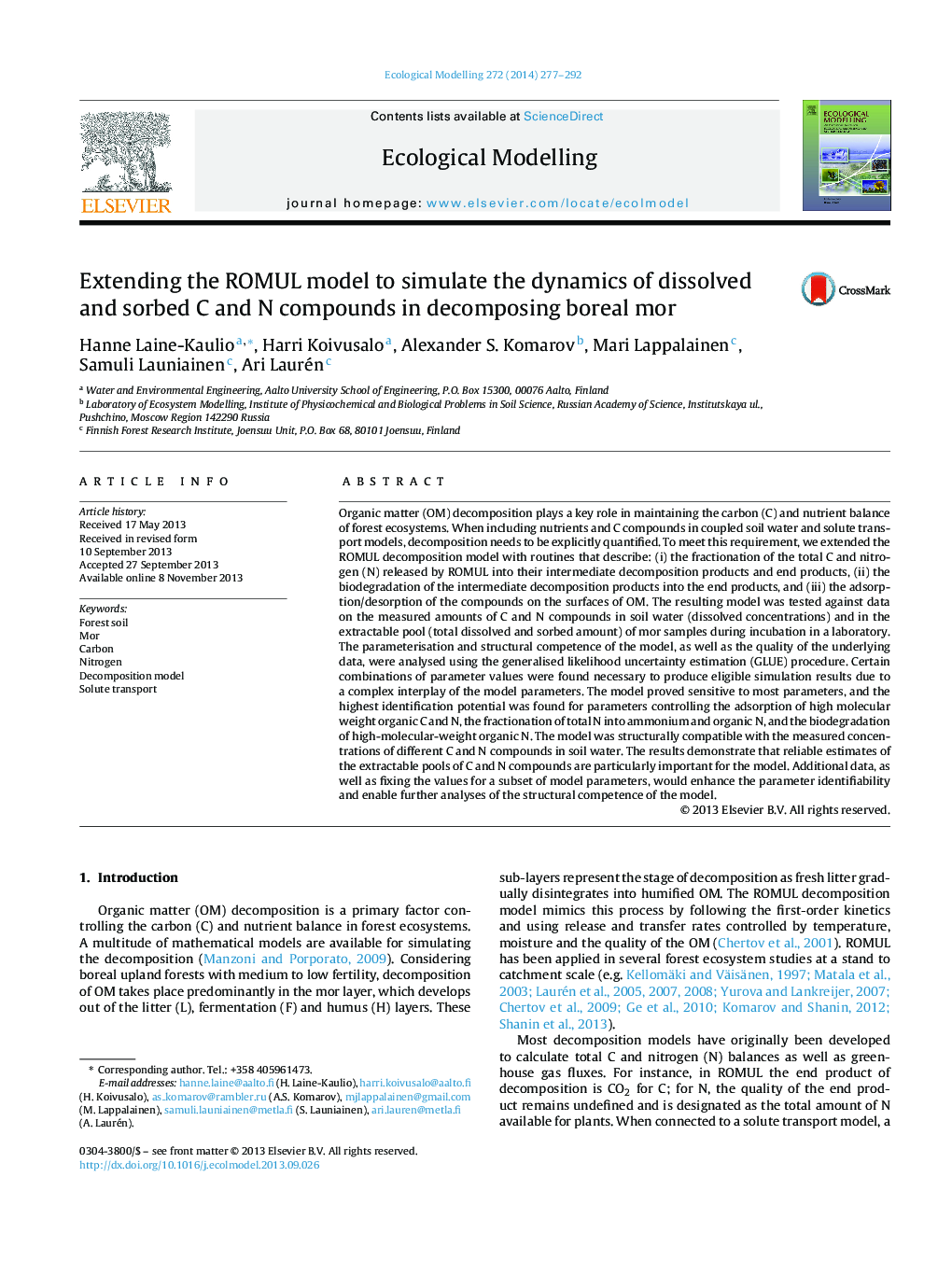| Article ID | Journal | Published Year | Pages | File Type |
|---|---|---|---|---|
| 6297016 | Ecological Modelling | 2014 | 16 Pages |
Abstract
Organic matter (OM) decomposition plays a key role in maintaining the carbon (C) and nutrient balance of forest ecosystems. When including nutrients and C compounds in coupled soil water and solute transport models, decomposition needs to be explicitly quantified. To meet this requirement, we extended the ROMUL decomposition model with routines that describe: (i) the fractionation of the total C and nitrogen (N) released by ROMUL into their intermediate decomposition products and end products, (ii) the biodegradation of the intermediate decomposition products into the end products, and (iii) the adsorption/desorption of the compounds on the surfaces of OM. The resulting model was tested against data on the measured amounts of C and N compounds in soil water (dissolved concentrations) and in the extractable pool (total dissolved and sorbed amount) of mor samples during incubation in a laboratory. The parameterisation and structural competence of the model, as well as the quality of the underlying data, were analysed using the generalised likelihood uncertainty estimation (GLUE) procedure. Certain combinations of parameter values were found necessary to produce eligible simulation results due to a complex interplay of the model parameters. The model proved sensitive to most parameters, and the highest identification potential was found for parameters controlling the adsorption of high molecular weight organic C and N, the fractionation of total N into ammonium and organic N, and the biodegradation of high-molecular-weight organic N. The model was structurally compatible with the measured concentrations of different C and N compounds in soil water. The results demonstrate that reliable estimates of the extractable pools of C and N compounds are particularly important for the model. Additional data, as well as fixing the values for a subset of model parameters, would enhance the parameter identifiability and enable further analyses of the structural competence of the model.
Related Topics
Life Sciences
Agricultural and Biological Sciences
Ecology, Evolution, Behavior and Systematics
Authors
Hanne Laine-Kaulio, Harri Koivusalo, Alexander S. Komarov, Mari Lappalainen, Samuli Launiainen, Ari Laurén,
